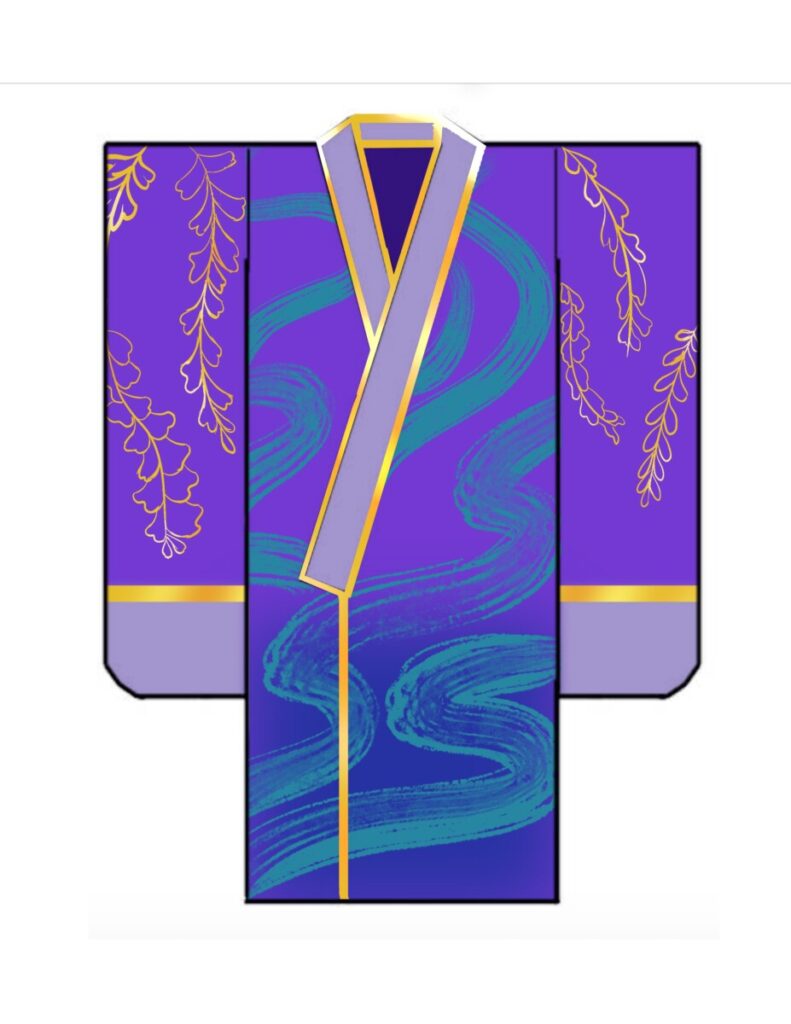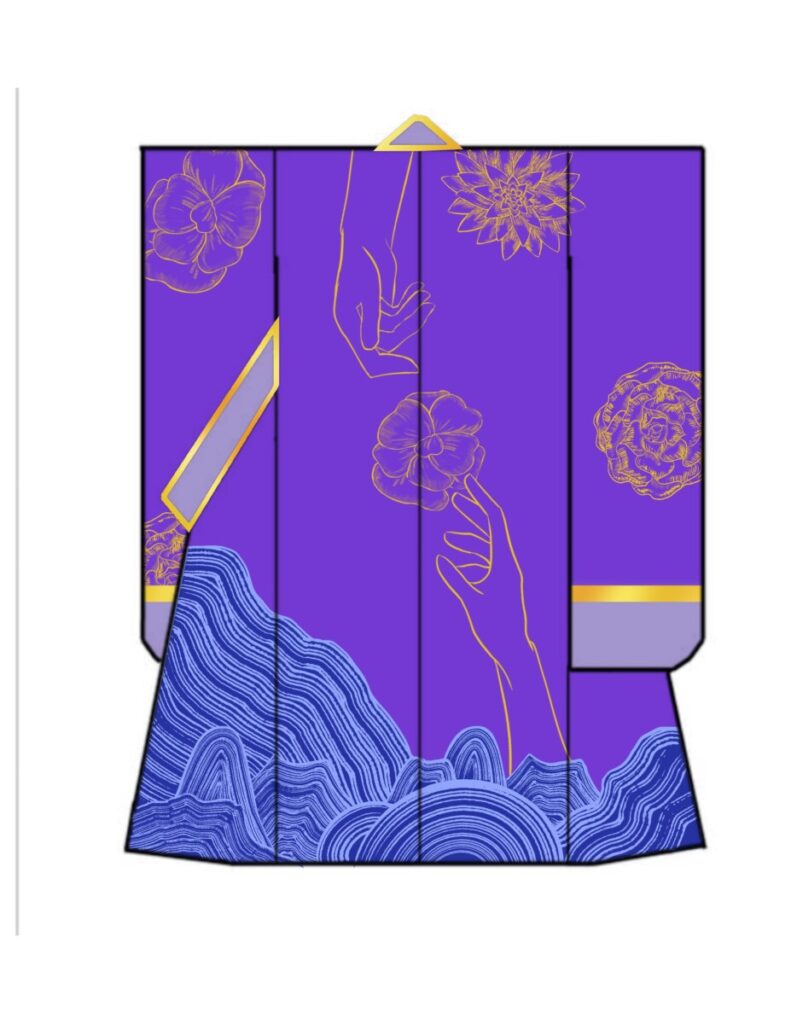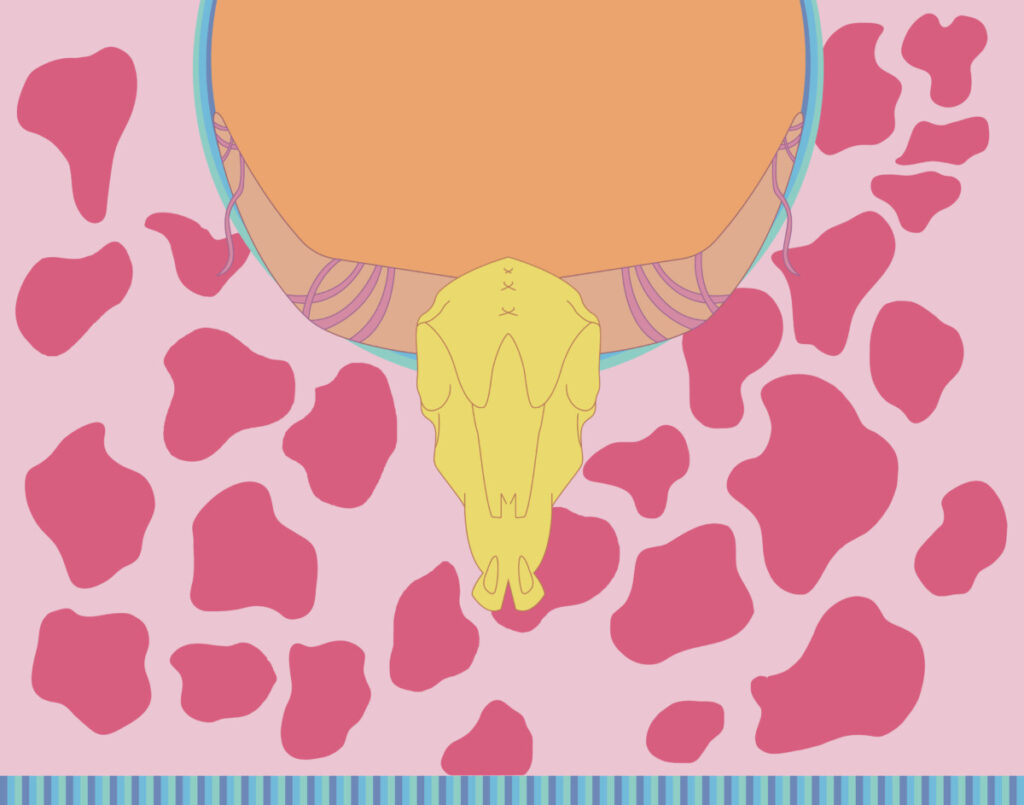Fall 2023
Global History of Dress and Textiles Syllabus
Nazanin Munroe
A survey of historic dress and textiles from pre-history to the Industrial era (c. 1800).
Explores garment styles and fabrics from Asia, Europe, the Islamic World, the Americas, and Africa. Culminates in a research paper/presentation about garments or textiles from one of the areas studied.


The Lost Lovers Kimono tells a story of losing a lover (due to death) and moving on from it. The use of purple for the kimono represents the ironic undying love. On the back has seigaiha patterns within mountains, camellia flowers and two hands reaching for each, one coming from the top of the kimono the other from the mountains. Breaking down the meaning of each motif, mountains symbolize a space between heaven and earth and because each hand is reaching from opposite ends we can see one of the lovers has died and one is still on earth. The seigaiha patterns within mountains represents ” the ebb and flow of life”. Moving on to the front of the kimono it has wisteria flowers and flowing rivers. The rivers represent “continuity and the future” and the wisteria represent love, together (along with the designs being on the front of the kimono) they represent the lover that is still alive. Signifiying that while they still have love for the one they have lost they are moving forward with their life.
The kimono would have to be dyed purple and perhaps dip dyed in blue at the bottom. The bottom of the sleeves and the eri/collar would be a separate lavender fabric sewn on trimmed with a gold material. All the designs would be embroidered with some being done with a metallic gold thread.




